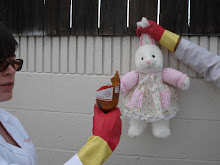If we look at the picture below, we’ll see that ocean ridges wrap around the globe like the seams on a baseball. They are areas of divergence meaning that they’re spots where our plates are moving apart from one another.
 If we look close up at an ocean ridge we can see the effects of all this pulling apart (see below). We’ve got Normal Faults because we’ve got extension in the crust. In the very very middle of the ridge (the ridge “axis”) we’ve got kind of a saggy region which is called the Rift Valley. If you were to find yourself in either Iceland or East Africa, you could see an actual Rift Valley. Touch it. Walk through it even.
If we look close up at an ocean ridge we can see the effects of all this pulling apart (see below). We’ve got Normal Faults because we’ve got extension in the crust. In the very very middle of the ridge (the ridge “axis”) we’ve got kind of a saggy region which is called the Rift Valley. If you were to find yourself in either Iceland or East Africa, you could see an actual Rift Valley. Touch it. Walk through it even.
Plates don’t move very fast so it’s not like these ridges are ripping open violently. We do have new magma being extruded at the surface, but in a very quiet way. When new magma pops up, the old crusty stuff has to get outta the way to make room so the rocks on either side of the ridge gradually move away from the ridge axis. This is the mechanism that we call sea-floor spreading. Sea-floor spreading tells us a few very important things. For starters, itt tells us about how fast the plate is moving AND about the orientation of the Earth’s magnetic field.
Magnetic Field? What the shit?
The Earth’s magnetic field undergoes reversals every now-and-again. The reversals are far from periodic and lots of people worry about why and how they reverse in the first place. Sea floor rocks like basalt are created at the ridge axis. Basalt has a lot of iron in it (see "Rocks for Jocks"). When the hot magma hits the cold water, little bits of iron minerals align themselves in the orientation of the Earth’s magnetic field (like a teeny-weeny compasses). By investigating the orientation of those compasses we can learn when the reversals happened and how long they lasted.
I wish I could say that a magnetic reversal means something exciting will happen like fish turn into cheeseburgers or the sky turns pink, but aside from messing with a few birds nothing really crazy happens. Sorry, gang.
Magnetic Field? What the shit?
The Earth’s magnetic field undergoes reversals every now-and-again. The reversals are far from periodic and lots of people worry about why and how they reverse in the first place. Sea floor rocks like basalt are created at the ridge axis. Basalt has a lot of iron in it (see "Rocks for Jocks"). When the hot magma hits the cold water, little bits of iron minerals align themselves in the orientation of the Earth’s magnetic field (like a teeny-weeny compasses). By investigating the orientation of those compasses we can learn when the reversals happened and how long they lasted.
I wish I could say that a magnetic reversal means something exciting will happen like fish turn into cheeseburgers or the sky turns pink, but aside from messing with a few birds nothing really crazy happens. Sorry, gang.


1 comment:
I think I'm beginning to understand science!
(awesome piece in Chief Magazine, bt dubs)
Post a Comment